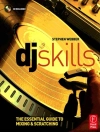This volume builds on the progress achieved by following the outlines and good practice established in Book 1. This book helps to establish the habit of regular sight-reading, generally recognized as a vital skill in all fields of music. To this end, the exercises are progressive and structured to increase the pupil’s awareness of new rhythms, keys and range of notes. Changes of hand position are introduced gradually, as is the recognition of and familiarity with chord shapes in both 2- and 3-note groups.
– A progressive approach based on self-learning
– 150 graduated exercises
– Both hands treated equally for melody and chord playing
– Hands together used throughout
İçerik tablosu
Simple hands together – no position moves – Semiquavers in 2/4 time – Semiquavers in 3/8 time – Position changes in the right hand – Position changes in the left hand – Simple position changes in both hands – Introducing chords – 2nds and 3rds – Introducing chords – 4ths and 6ths – Introducing chords – 5ths and 6ths – Introducing chords – 5ths and 7ths – Introducing various 2-note chords – Introducing triads and inversions – Introducing dominant 7th chords – The key of E minor – The key of B minor – The key of B flat major – The key of G minor
Yazar hakkında
John Kember studied at Trinity College of Music, London and has enjoyed a varied career in both performing and academic spheres, ranging from teaching in schools and privately, to working as composer, arranger, pianist and conductor in Concert Halls, theatres and recording studios. Currently John is working on a number of new and exciting projects for both publication and performance. He has a busy private teaching practice in south east London and teaches for Kent Music School and the Kent Centre for Young Instrumentalists in Maidstone. John was an examiner for the Associated Board of the Royal Schools of Music from 1989 until 2005












